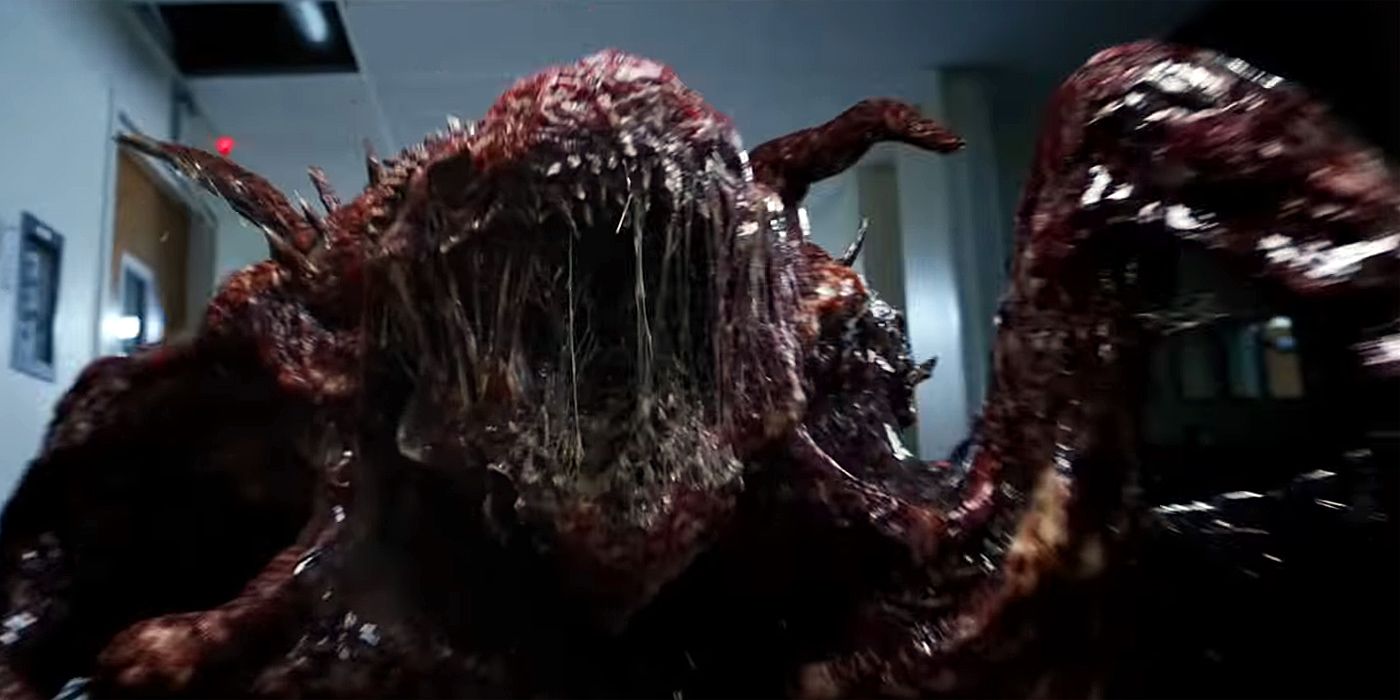
Body horror is a key component of the Stranger Things formula. Throughout the Netflix thriller's three seasons, bodies get mutilated, throats have horrifying shadow tentacles shoved down them and blood splatters absolutely everywhere. Season 3 really upped the ante on the grossness, though, thanks to the particular nature of the season's overarching threat. However, those who watched it with subtitles may have noticed that a certain upsetting onomatopoeic description pops up with unsettling regularity. The defining word of Season 3 is "squelching," and it's seriously stomach-turning.
In Stranger Things Season 3, the show's stubbornly un-killable big bad, the Mind Flayer, is back to terrorize Hawkins, Indiana again -- and this time, it's got an extra goopy scheme for its third attempt to take over the world. The eldritch being starts off possessing rodents, quickly graduating to taking over townspeople and forcing them to ingest chemicals so that their bodies liquefy into easily manipulatable clumps of biomass. These people-puddles can squeeze, flow, and, yes, squelch their way in and out of any opening. Not to mention they can also combine and reconstitute into any form the Mind Flayer wishes. The more nasty organic jelly the Flayer can get, the bigger the body it can create with it. It's an absolutely revolting concept and a pretty genius plan on the Flayer's part.

This grisly plot device means anytime the Mind Flayer and its constructs are onscreen, inevitably, something is squelching. At first, the word only sporadically appears, which makes sense as the showrunners obviously need to keep the monster's new form mostly hidden in the early episodes to build suspense. As the season rolls on and more and more of the town's unlucky residents fall prey to the Mind Flayer's plan, "squelching" shows up with increasing frequency in the subtitles.
By the season's midpoint, viewers are regularly treated to lingering shots of the Flayer's gargantuan bone-and-blood mass of a body oozing around the Brimborn Steel Works. An equally nauseating sound effect accompanies each horrifying movement. Watching the Flayer absorb its goopy, dissolved minions into itself as the subtitles helpfully inform audiences that copious squelching is occurring is truly a quintessential Stranger Things viewing moment.
In the hierarchy of universally agreed-upon cringe-inducing words, "moist" has long reigned supreme -- see approximately the last ten years of meme history for reference. However, "squelch" is a strong contender that should have been in the running from the beginning. There's something deeply discomforting about the word on a visceral, primal level.

Generally speaking, squelching doesn't herald anything good in any situation. It holds an inherent connotation of liquid textures and squishy, oozing movement that taps into a fearful animal part of the brain and awakens a deep-seated unease. Of course, everything in that previous sentence is prime Stranger Things material, so the overuse of "squelching" in the subtitles tracks. Really, when looking at the Mind Flayer's shambling, gloopy form, it's hard to think of a better description for the way it moves and the sounds it makes as it does.
Naturally, "squelching" appears in the first two seasons as well, but with nowhere near the same prevalence as it does in the show's third chapter. This makes a lot of sense. Much of the action in early Stranger Things is less focused on all-out, gross-out body horror, and more centered on the characters fighting physical, external threats like the demodogs. In Season 3, though, the terror is very up close and personal for the people of Hawkins, and thus things must squelch.
0 Comments